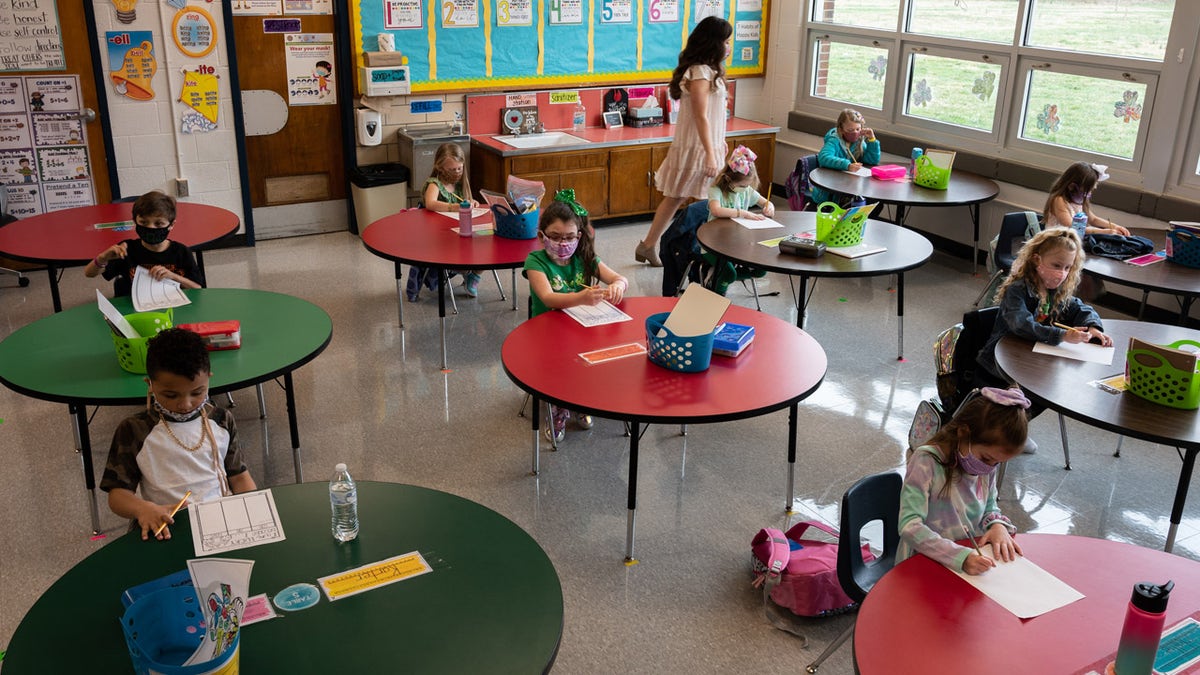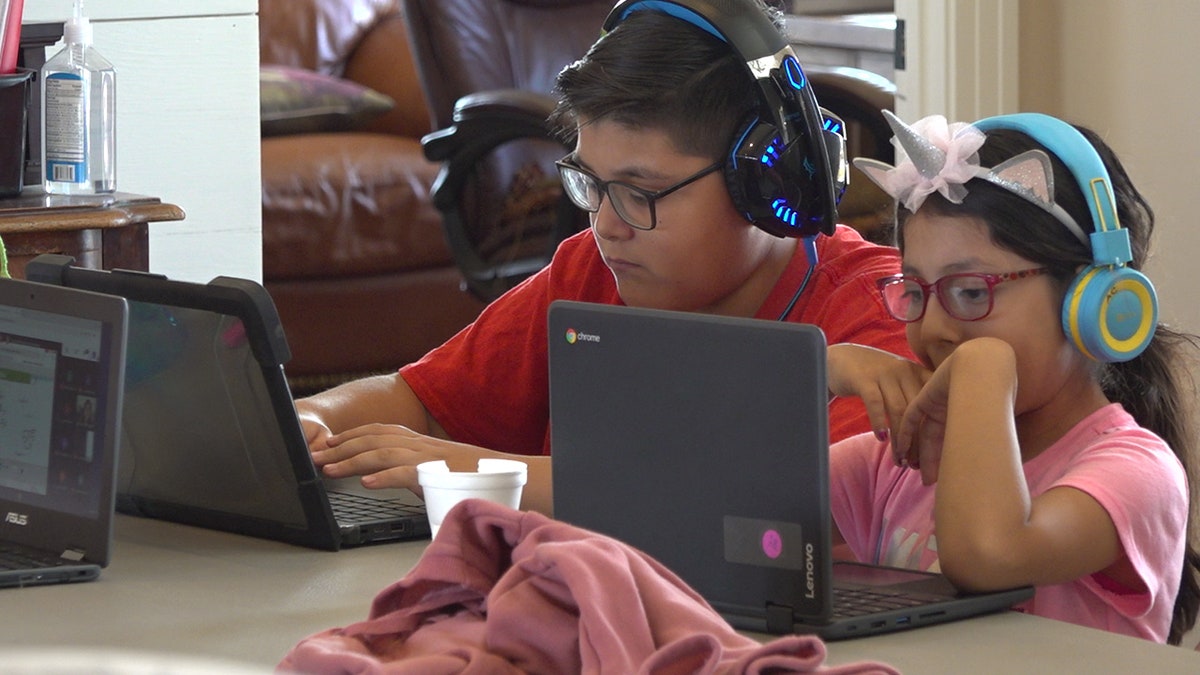California parents fight school board's unanimous decision to stick with remote learning
Pittsburg, Calif. father of six Wolfgang Croskey says distance learning doesn't work and children need to be back in the classroom.
Teachers unions had a greater effect on school reopening plans than COVID-19 hospitalizations, a new report examining unions in 250 large, urban school districts found.
Since last spring, researchers from the University of Nevada, Las Vegas, and Michigan State University looked at teachers unions' collective bargaining agreements and social media posts, COVID-19 severity, demographics, and political preferences in local communities to create a predictive model that determined why some urban schools were reopening while others weren't.
"When you look at COVID-19 hospitalization rates ... we're talking a non-statistically significant effect, but we're also talking zero relationship," Bradley Marianno, director of the UNLV Center for Research, Evaluation and Assessment, told Fox News of his study.

A teacher walks among the the masked students sitting in a socially distanced classroom session at Medora Elementary School on March 17, 2021 in Louisville, Kentucky. (Photo by Jon Cherry/Getty Images)
He added that "there was literally no correlation between COVID hospitalization rates and whether or not" schools reopened or remained closed starting in the summer and fall of 2020.
There were, however, three other main predictors that determined whether schools reopened: the strength of local teachers unions, the political preferences of a specific county, and the number of white students in a school district.
WHERE ARE SCHOOLS REOPENING FROM CORONAVIRUS CLOSURES? SEE THE MAP
Schools were more likely to reopen faster in school districts where teachers unions had less influence, there were more Trump voters in the area or there were more white students, according to the study.
"This kind of matches the anecdotal stories you [hear] at school board meetings, and you see the decisions being made ... are far more about political views and special interest groups' strength than they are actually about, as we say, following the science in terms of the pandemic severity," Marianno said.
CALIFORNIA STATE LAWMAKER PROPOSES PROGRAM TO HELP PARENTS WITH OUT-OF-POCKET REMOTE LEARNING COSTS
He added that while the COVID-19 pandemic is an unprecedented crisis and we still don't know much about the virus, schools have been more hesitant to reopen "than they actually need to be."
"There's a growing amount of evidence out there that suggests that we're widening opportunity gaps for our kids the longer we remain in distance learning," Marianno explained.

Students working from home (Stephanie Bennett/Fox News).
The Centers for Disease Control and Prevention said in January that there is "little evidence that schools have contributed meaningfully to increased community transmission." In February, the agency said the adverse effects of virtual learning outweigh the threat of transmitting the virus during in-school learning.
"There is more spread that is happening in the community when schools are not open than when schools are open," CDC Director Rochelle Walensky told reporters at the time.
The CDC has issued reopening guidelines for U.S. schools that does not require teacher vaccinations in order for schools to reopen — one of the demands some teachers unions were advocating for — though educators in most states are already eligible to receive the vaccine if they sign up for it.
LEARNING SETBACKS A TOP CONCERN FOR PARENTS, POLL SAYS
On Friday, the CDC announced another update, stating in a release that it now recommends students should maintain a distance of "at least [three] feet in classroom settings," rather than six feet, with universal masking in elementary schools and areas where transmission is low, moderate or substantial.
President Biden had the initial goal of reopening schools within the first 100 days of his presidency, though plans have since faltered, in part due to pushback from teachers unions.
Marianno's study noted that since the summer and fall of 2020, the United Federation of Teachers organized a protested New York's plan to return to in-person learning; the Orange Couty Classroom Teachers Association in California filed a lawsuit against the district's reopening plan; the Chicago Teachers Union negotiated terms of the city's reopening plan well into February with teachers threatening to strike; and Baltimore students who returned to school in the fall were 100% remote by Thanksgiving, with the Baltimore Teachers' Union opposing plans to return.
CLICK HERE TO GET THE FOX NEWS APP
Overall, states across the south and southeast are offering the most full-time, in-person learning.
The state taking the most cautious approach to reopening is California, with 44.7% of its districts operating remote-only, according to the data. It is followed by Arizona with 27.6% and New Mexico with 24.1%.
Fox News' Brooke Singman and Greg Norman contributed to this report.





















